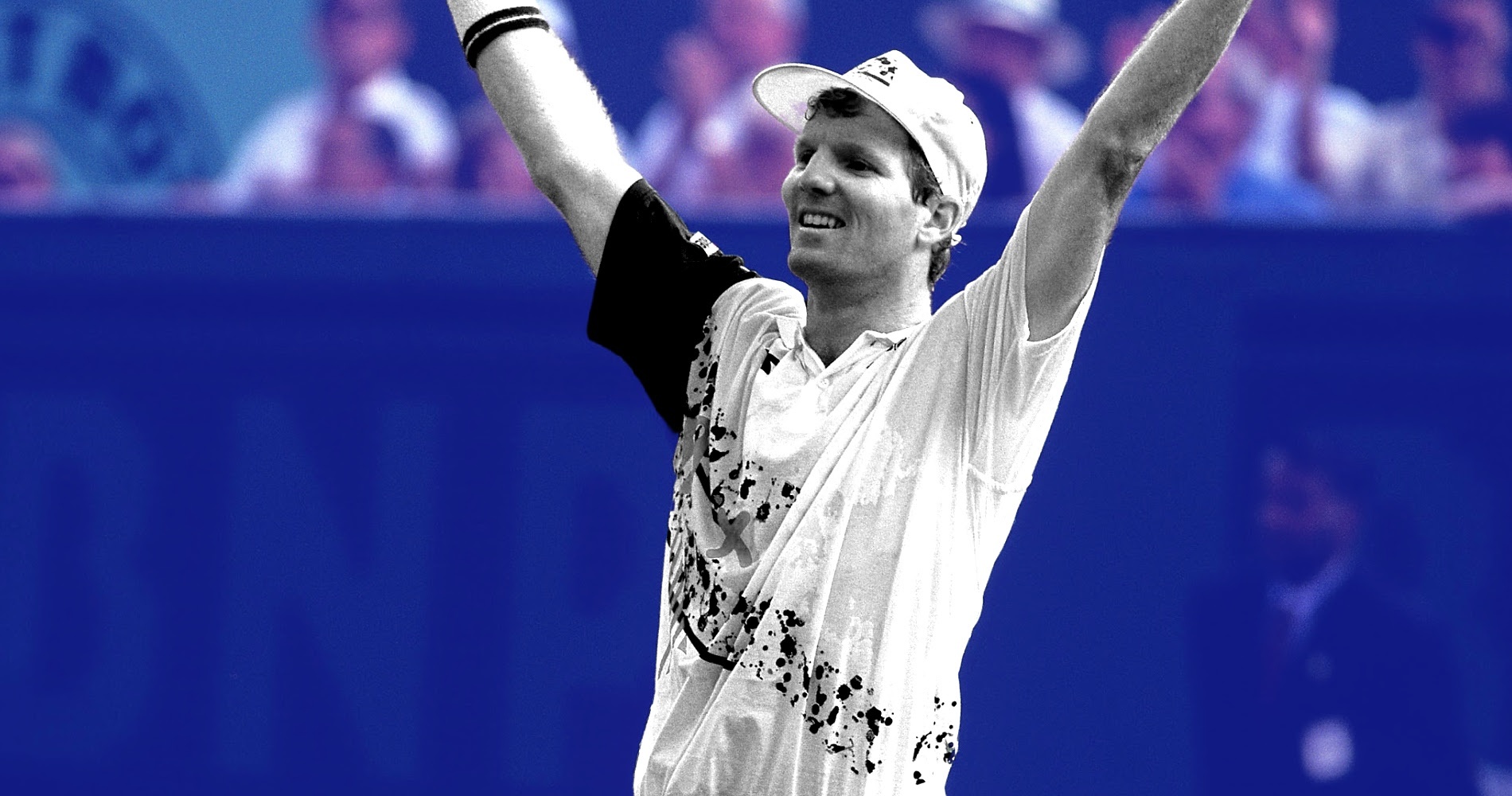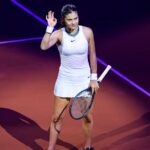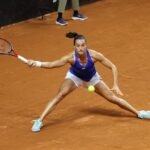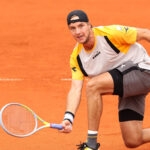February 1, 1998: The day Petr Korda won his first – and only – Grand Slam title
Every day Tennis Majors looks back at the biggest moments in tennis history. Today, we go back to 1998 to witness how, at the Australian Open, Petr Korda beat Marcelo Rios to win the first and only Grand Slam title of his career
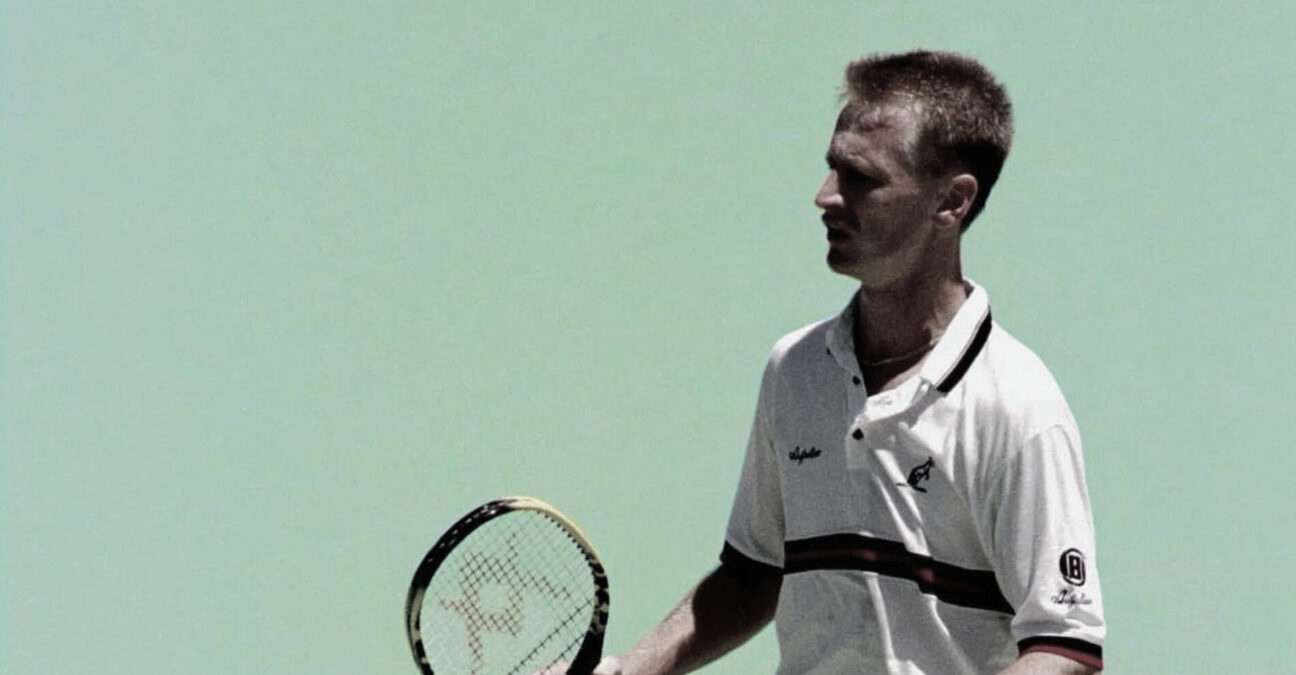 Petr Korda, Australian Open
Petr Korda, Australian Open
What happened exactly on that day
On this day, February 1, 1998, in an all-lefty Australian Open final, Petr Korda easily defeated Marcelo Rios (6-2, 6-2, 6-2). The 30-year-old Czech, who had already played one major final at the French Open, in 1992, would fail a drug test a few months later at Wimbledon, which would probably push him to an early retirement and question the fairness of his Australian triumph.
The players: Petr Korda and Marcelo Rios
- Korda, the Czech left-hander with a trademark hitch-kick celebration
Petr Korda, a left-handed player with a classical technique, was born in 1968 in Prague. He turned professional in 1987, and he established himself steadily in the top 100 in 1989, the year he reached his first final on the Tour, in Frankfurt (lost to Kevin Curren, 6-2, 7-5).
He claimed his first title in 1991 in New Haven, defeating Goran Ivanisevic in the final, but his breakthrough year at the top level was 1992. That year, not only did he win three tournaments (Washington, Long Island and Vienna), but he also finished runner-up to Jim Courier at Roland-Garros (7-5, 6-2, 6-1). Thanks to these results, he reached his career-high ranking, world No 5, in July. In 1993, he reached the quarter-finals at the Australian Open (lost to Courier, 6-1, 6-0, 6-4) and won the very well-paid Grand Slam Cup, defeating Michael Stich in the final (2-6, 6-4, 7-6, 2-6, 11-9).
After three average seasons in1994-1996, he came back into the top 15 in 1997, winning the Stuttgart Super 9 event (defeating Richard Krajicek in the final, 7-6, 6-2, 6-4) and reaching the US Open quarter-finals (defeated by Jonas Bjorkman, 7-6, 6-2, 1-0, ret.). He began 1998 by winning the tournament in Doha (defeating Fabrice Santoro, 6-0, 6-3), which propelled him back into the top 10 as world No 8.
- Marcelo Rios – “El Chino”, a wizard with a racquet
Born in 1975, Marcelo Rios, nicknamed “El Chino”, had been known as a promising and entertaining player since 1994, when at the age of 17, he gave a hard time to world No 1 Pete Sampras at Roland-Garros (losing 7-6, 7-6, 6-4). The following year, he claimed his first title, in Bologna (defeating Marcelo Filippini in the final, 6-4, 6-2), and soon added two other trophies to his list of achievements (in Amsterdam and Kuala Lumpur).
In 1996, at the age of 20, he reached the semi-finals at Indian Wells, Monte-Carlo and Toronto, becoming the first Chilean tennis player to enter the top 10. In 1997, the Santiago-born lefty won his first Masters 1000 tournament, at Monte-Carlo, defeating Alex Corretja in the final (6-4, 6-3, 6-3), but he also finished runner-up at the Rome Masters 1000 and reached the quarter- finals at both the Australian Open and the US Open. Climbing as high as world No 6, he finished the year as world No 10.
Known for his smooth game style and his great touch, he was also well known for his bad temper, especially towards fans and journalists: he was reluctant to sign any autographs and it was almost impossible to get anything out of him in interviews, except mumbles and abuse.
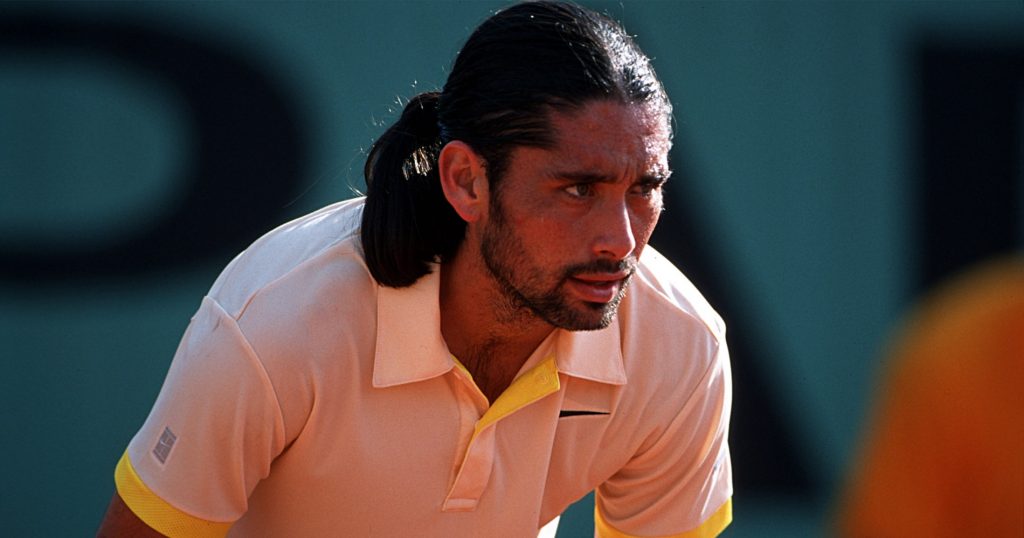
The place: The Australian Open, Melbourne Park
Unlike the other Grand Slam tournaments, The Australian Open (first known as the Australasian Championships and, later, the Australian Championships) had moved location several times over the years. In fact, the event switched cities every year before it settled in Melbourne in 1972, and no fewer than five Australian cities had hosted the event at least three times: Melbourne, Sydney, Adelaide, Brisbane and Perth.
The event was held on grass at the Kooyong Stadium, in a posh eastern suburb of Melbourne. Its timing had changed several times as well, between early December and January, going from being the first Grand Slam of the year to being the last. Until 1982, many of the best players skipped the Australian Open, mainly because of the remoteness and the low prize money, but with the triumph of Mats Wilander, the dynamic changed.
The tournament’s board made big efforts to make it as prestigious as the other Grand Slams, which ended up with the event moving to a new location in 1988, to Flinders Park (later known as Melbourne Park), switching from grass to hard courts, and displaying the first-ever centre court equipped with a retractable roof.
Prize money increased as well, and it wasn’t long before the tournament became many player’s favourite Grand Slam.
The facts: Experience prevails as Korda wins in 85 minutes
In 1998, the Australian Open was full of surprises. In the second round, the third seed and former runner-up Michael Chang was ousted by Guillaume Raoux (6-4, 7-6, 7-6); then, in the third round, the second seed, Pat Rafter, was eliminated by a clay-court specialist, Alberto Berasategui (6-7, 7-6, 6-2, 7-6). Berasategui also defeated Andre Agassi in the fourth round (3-6, 3-6, 6-2, 6-3, 6-3).
With so many of the tournament’s favourite players suffering early losses, it seemed like the world No 1, Pete Sampras, was going to add a third Australian Open crown to his list of achievements without any trouble, but he was upset in the quarter-finals by unheralded Karol Kucera (6-4, 6-2, 6-7, 6-3).
Korda, the sixth seed, took advantage of Sampras’s loss and beat Kucera in the semi-finals (6-1, 6-4, 1-6, 6-2) to reach a Grand Slam final for the second time in his career, almost six years after his loss to Jim Courier at Roland-Garros.
In the other half of the draw, Marcelo Rios, the Chilean rising star, got rid of Berasategui in the quarter-finals (6-7, 6-4, 6-4, 6-0), and then dismissed the unexpected French semi-finalist Nicolas Escudé (6-1, 6-3, 6-2).
In this battle of lefties, the first one in an Australian Open final since Roscoe Tanner defeated Guillermo Vilas in 1977, the more experienced of the two players easily prevailed, 6-2, 6-2, 6-2 in only 85 minutes. Although Rios, playing his first Grand Slam final, played far from his best level, he wasn’t helped by an extremely aggressive Korda, who, according to The New York Times, “came out swinging for the lines and barely missed them.” Korda sealed his victory breaking Rios’s serve one last time with a winner – the 32nd of the match.
”I don’t think I was nervous, but maybe I was excited; I mis-hit too many balls, lost my coordination,” said Rios. “He was hitting the ball hard from the beginning, so I never got my rhythm.
“I was on the waiting end of this for a long, long time; I didn’t believe it could happen, it’s like a dream,” said Korda. ”I was so nervous yesterday, but today I enjoyed it right from the first point.”
Thanks to this first Grand Slam title, claimed at his 35th attempt, Korda climbed as high as world No 2, the best ranking of his career.
What next: Rios hits No 1, Korda retires after drug scandal
In the following weeks, Korda and Rios would both be in a position to take the world No 1 spot from Pete Sampras. The two men would face each other again at Indian Wells, but this time, Rios would prevail (6-4, 6-2), and, after having won at both Indian Wells and Miami, the Chilean would be the one seizing the top spot.
A few months later, at Wimbledon, Korda would test positive for nandrolone, which would push him to announce his retirement during the summer of 1999, without even waiting for the outcome of the procedure between him and the ATP.
Suffering from an elbow injury, Rios would only play three matches as world No 1, a spot he would occupy for only six weeks in total. Unlike Ivan Lendl, who, after having reached the top spot, won numerous Grand Slams, Rios would remain the only world No 1 in tennis history to never lift a major trophy. However, in 1999, he would become the first player in tennis history to win all the three clay-court Masters 1000 tournaments.
He would remain a top 10 player until April 2000, before a series of injuries would prevent him from ever playing another entire season on the Tour. He would retire from tennis in 2004, aged only 28.
